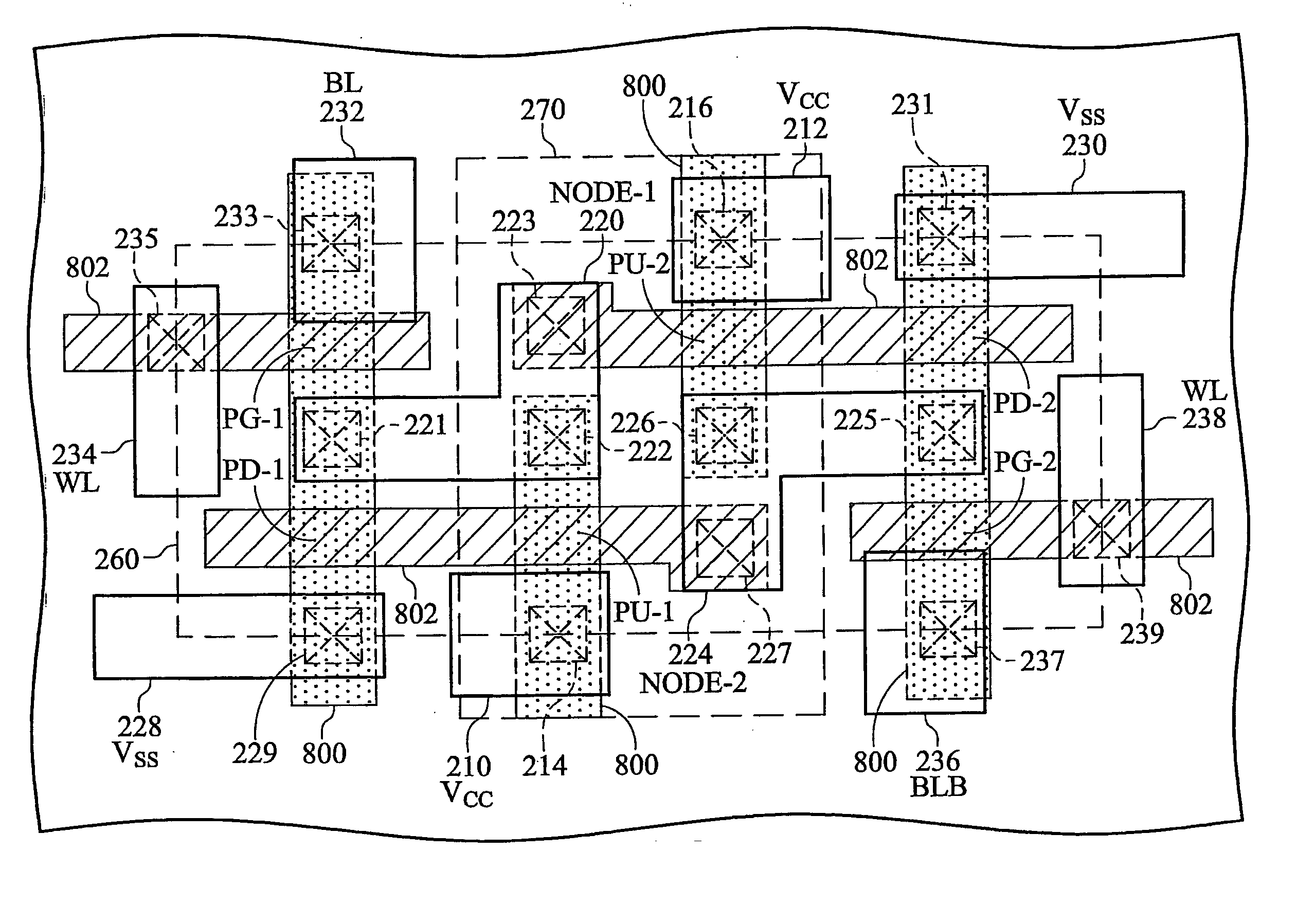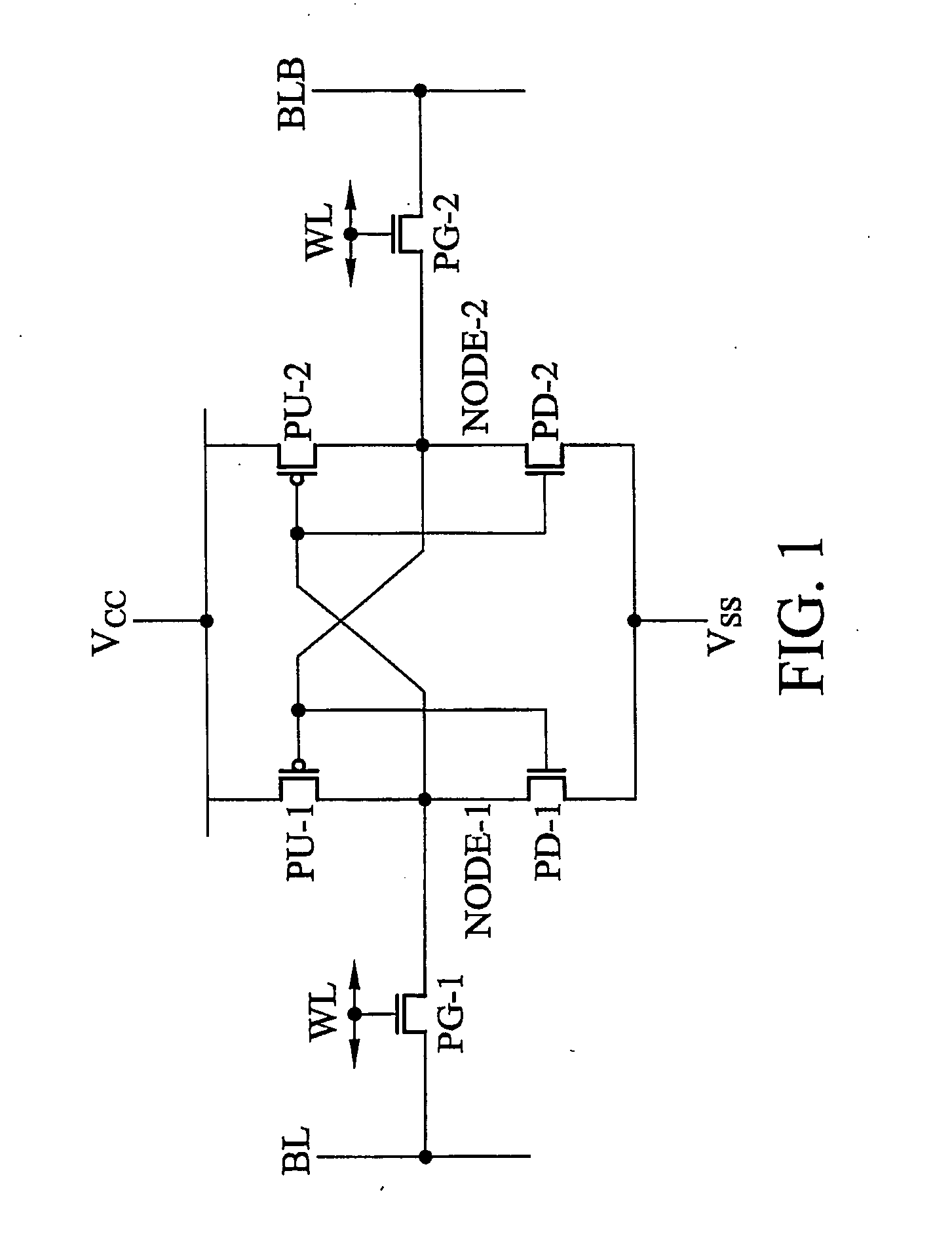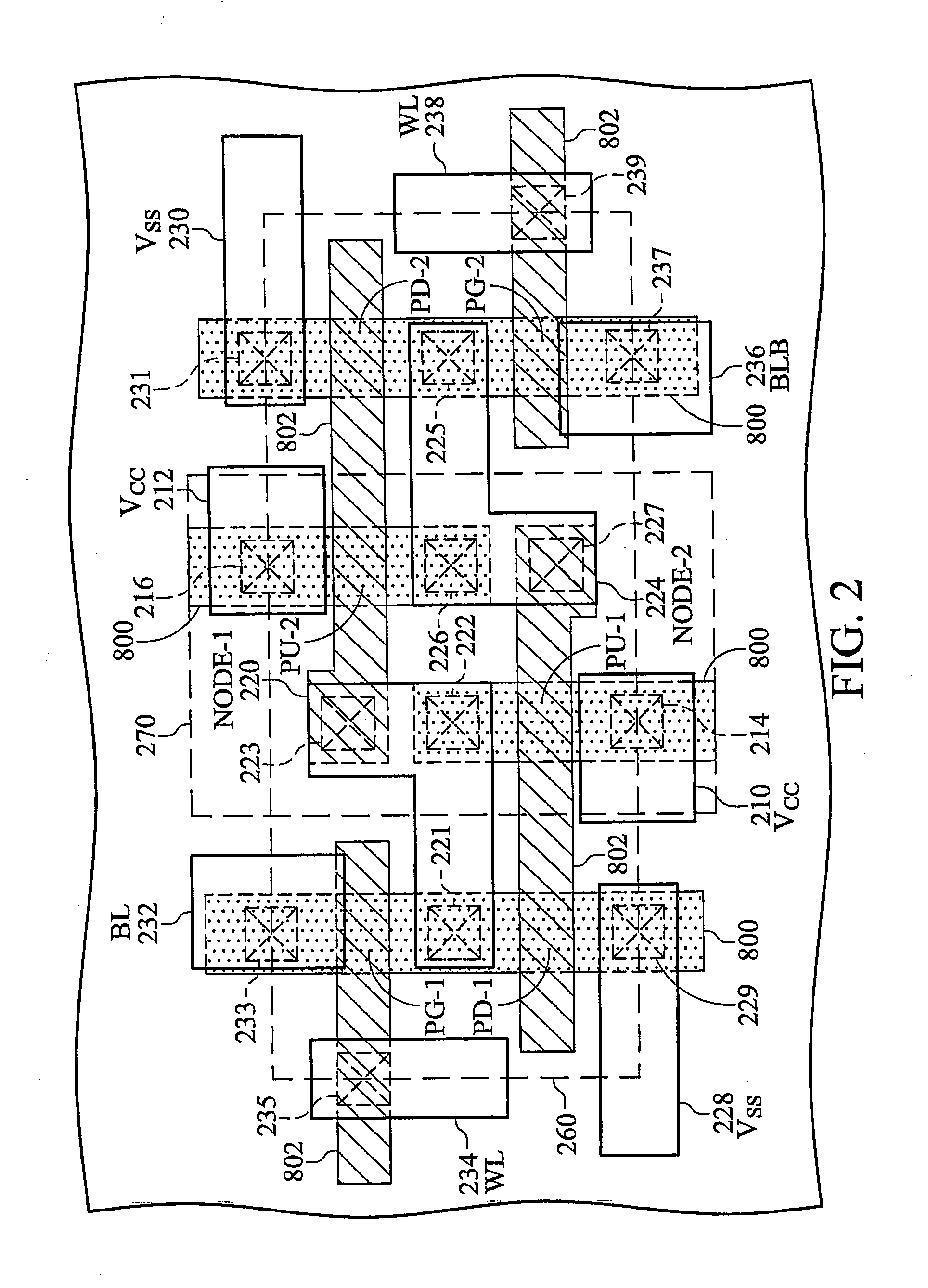Memory cell structure
a memory cell and cell structure technology, applied in the field of memory cell structure systems, can solve the problems of soft errors, small cmos devices, and large challenges,
- Summary
- Abstract
- Description
- Claims
- Application Information
AI Technical Summary
Benefits of technology
Problems solved by technology
Method used
Image
Examples
first embodiment
[0034] Referring first to FIG. 1, a schematic diagram of the 6T-SRAM cell of the first embodiment is shown. Generally, the 6T-SRAM cell comprises a first pass-gate transistor PG-1, a second pass-gate transistor PG-2, a first pull-up transistor PU-1, a second pull-up transistor PU-2, a first pull-down transistor PD-1, and a second pull-down transistor PD-2.
[0035] In operation, the memory cell of the first embodiment forms two complementary nodes, shown as NODE-1 and NODE-2 in FIG. 1. Because NODE-1 is tied to the gate of the second pull-up transistor PU-2 and NODE-2 is tied to the gate of the first pull-up transistor PU-1, the values stored in each node will remain complementary to each other. For example, when NODE-1 is high, the PMOS second pull-up transistor PU-2 prevents the current from the current source Vcc from flowing to NODE-2. In parallel, the gate of the NMOS second pull-down transistor PD-2 is activated, allowing any charge that may be in NODE-2 to go to ground. Furtherm...
third embodiment
[0060]FIGS. 5a and 5b show a 6T-SRAM cell in accordance with a third illustrative embodiment of the present invention. FIG. 5a shows a cross sectional view of the 6T-SRAM cell 500 of the The discussion of the third illustrative embodiment also includes FIG. 5b, which shows a plan view of the pull down transistor 508 in the third illustrative embodiment.
[0061]FIG. 5a shows an SRAM cell 500 of the third illustrative embodiment. The substrate 502 is preferably a bulk silicon substrate. Other substrates may be used, including silicon on insulator (SOI) substrates, substrates having a substantially crystalline structure with a Miller indices of , and substrates having a substantially crystalline structure with a Miller indices of , for example.
[0062] An n-type metal oxide semiconductor (NMOS) transistor 504 of the third embodiment is shown in FIG. 5a in a PWELL region 506. The NMOS transistor 504 is shown beside a p-type metal oxide semiconductor (PMOS) transistor 508 in an NWELL regio...
fifth embodiment
[0073]FIGS. 8 and 9 show a 6T-SRAM cell in accordance with a fifth illustrative embodiment of the present invention. FIG. 8 is a schematic view of a dual port 8T-SRAM cell 660 of the FIG. 9 is a cell layout of the dual port 8T-SRAM cell 660 of the fifth illustrative embodiment.
[0074] In accordance with a fifth illustrative embodiment, a dual port eight transistor (8T) SRAM cell 660 is shown in FIG. 8. In operation, the 8T-SRAM 660 operates substantially the same as a 6T-SRAM. In contrast with a 6T-SRAM however, the dual port 8T SRAM cell 660 of the fifth embodiment includes two ports, PORT-A and PORT-B. PORT-A includes the NMOS pass gate transistor PG-1, the NMOS pass gate transistor PG-2, the bit line BLA, the complementary bit line BLB, and the word line WL-A. PORT-B includes the NMOS pass gate transistor PG-3, the NMOS pass gate transistor PG-4, the bit line BLB, the complementary bit line BLBB, and the word line WL-B. The two bit lines, i.e., bit line A (BLA) and bit line B (BL...
PUM
 Login to View More
Login to View More Abstract
Description
Claims
Application Information
 Login to View More
Login to View More - R&D
- Intellectual Property
- Life Sciences
- Materials
- Tech Scout
- Unparalleled Data Quality
- Higher Quality Content
- 60% Fewer Hallucinations
Browse by: Latest US Patents, China's latest patents, Technical Efficacy Thesaurus, Application Domain, Technology Topic, Popular Technical Reports.
© 2025 PatSnap. All rights reserved.Legal|Privacy policy|Modern Slavery Act Transparency Statement|Sitemap|About US| Contact US: help@patsnap.com



